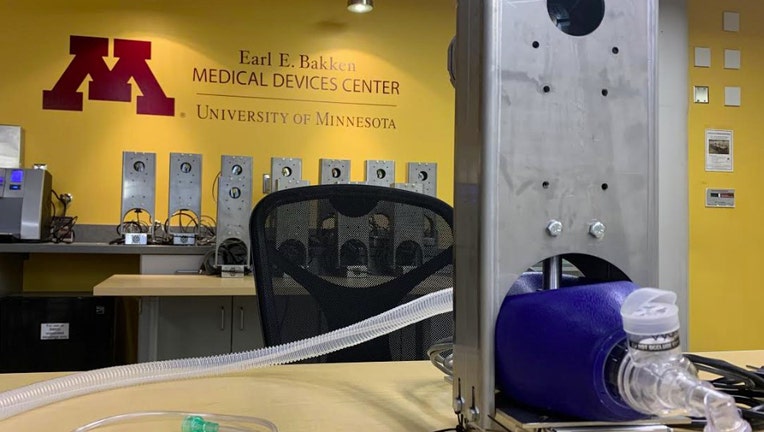FDA authorizes first-of-its-kind low-cost ventilator developed by U of M researchers

The FDA authorized a low-cost ventilator designed by researchers at the University of Minnesota.
(FOX 9) - The U.S . Food and Drug Administration has authorized the production of a low-cost ventilator developed and designed by University of Minnesota researchers.
According to a release, the Coventor is meant to be used as an alternative in clinical settings experiencing a significant surge in patients or with few to no ventilators.
Ventilators are used in a clinical setting to assist patients with increasing their blood oxygen levels. They have become a critical treatment device for COVID-19 and were used previously to support patients with pneumonia and acute respiratory distress. Ventilators are in short supply nationwide as hospitals respond to the COVID-19 pandemic.
“Our hope is that the Coventor will be useful in those clinical settings where traditional ventilators are not available. With FDA authorization, we are closer to that happening," Stephen Richardson, a cardiac anesthesiology fellow in the Medical School, M Health Fairview, said in the release.
According to the release, Richardson and a U of M research team, along with fellow inventor Aaron Tucker, adapted their initial prototype from an assortment of available machinery components to a custom slider-crank mechanism which allows medical staff to control how oxygen is delivered to patients. The Coventor is compact—table top/desktop size—and relatively inexpensive to manufacture and distribute.
“Because of its ease, simplicity and cost, we believe this concept can be scaled in many different designs,” said Tucker, a lab supervisor at the Earl E. Bakken Medical Devices Center and graduate student in the College for Science and Engineering (CSE).
With FDA authorization, the design can move forward with production and distribution to health care systems. University researchers said the Coventor’s specification will be made open source so other manufacturers globally can begin their regulatory and production processes.

